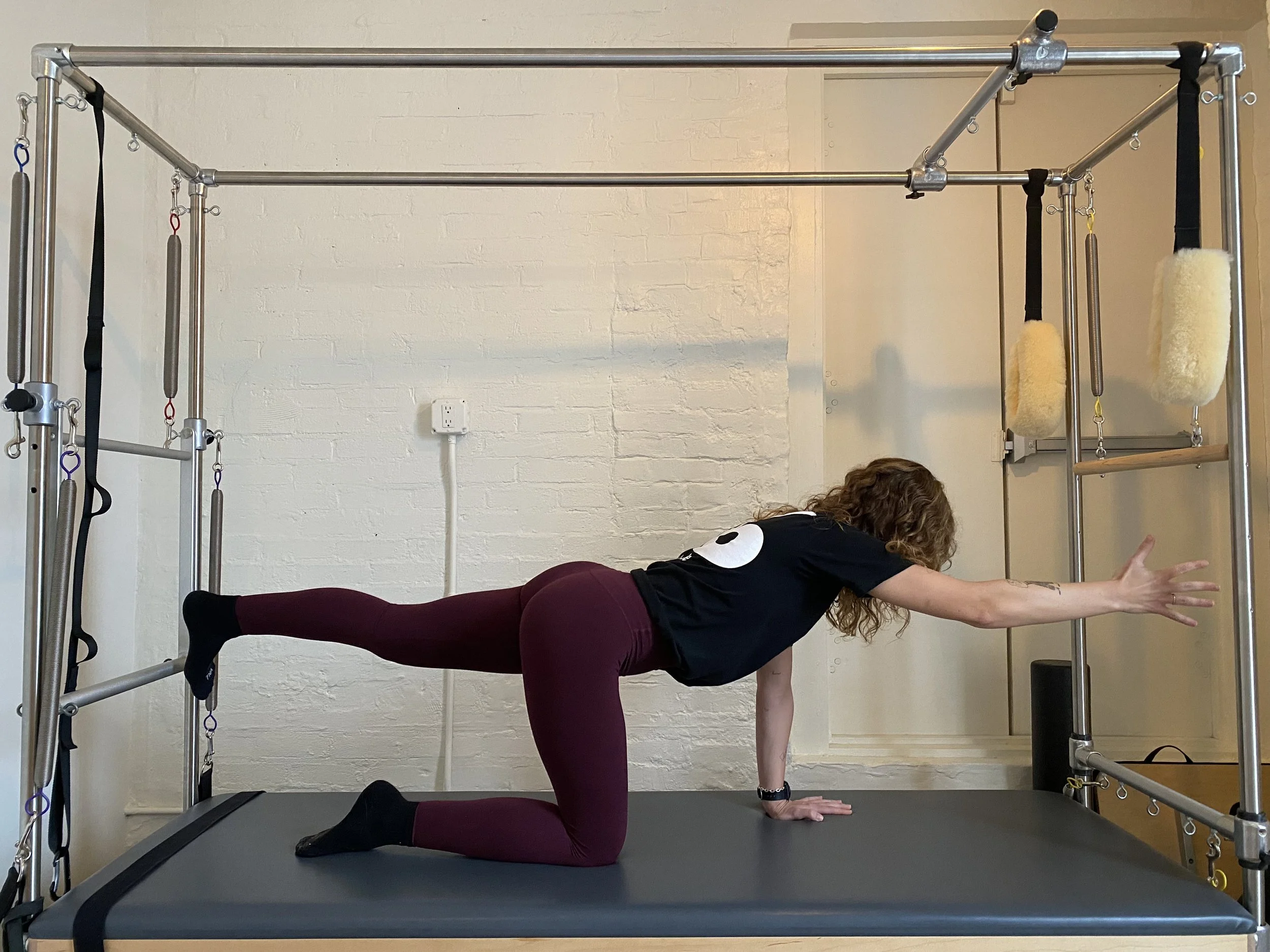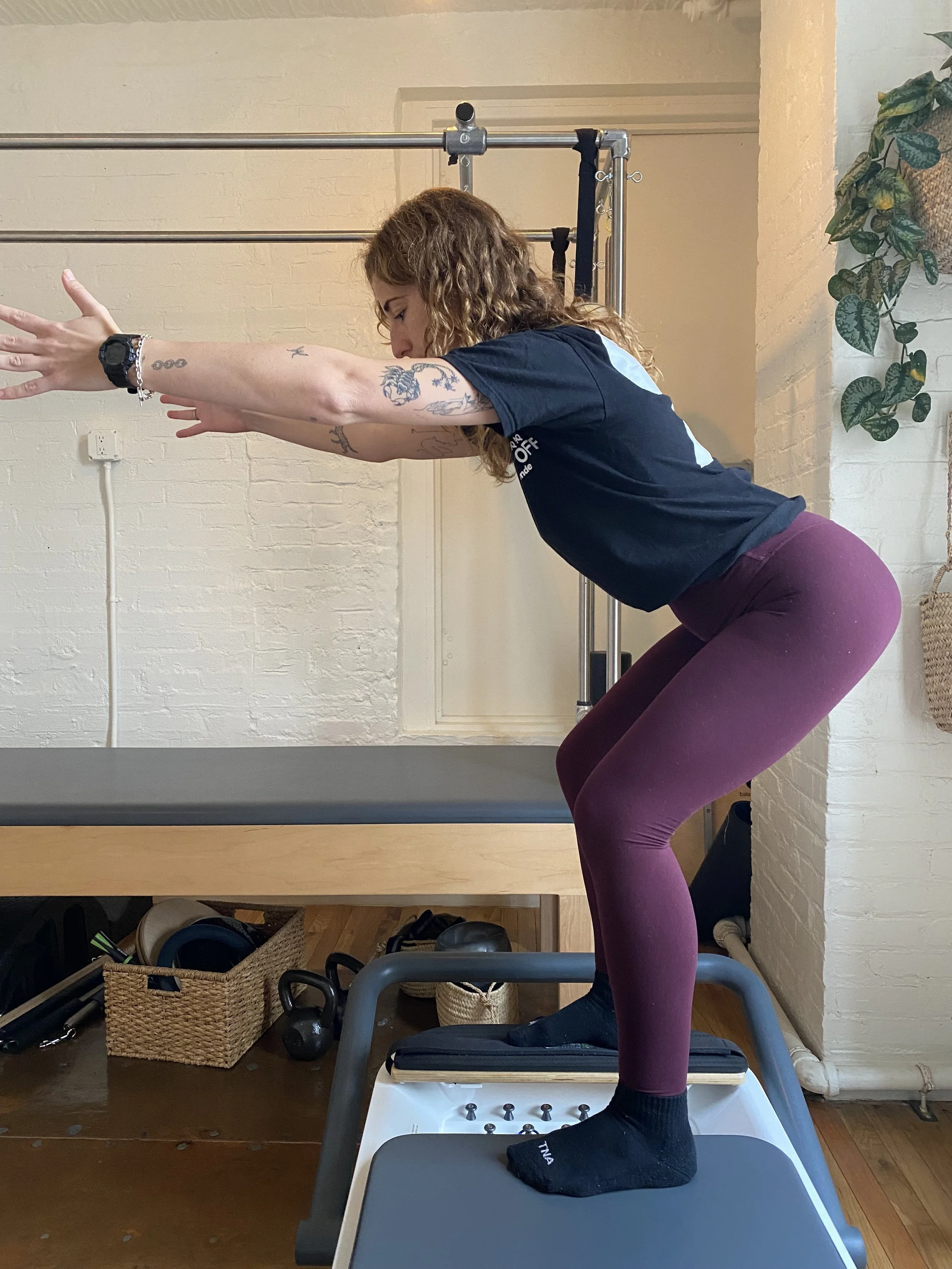The 4 Exercises Every Woman Over 50 Should Do
/Last week on the blog, I wrote about a habit I adopted in 2021 that has made a major difference in my health (check out my post about bone broth here) and the response I received was overwhelming. So overwhelming, in fact, that I want to share more things that have been game-changers for my health!
With that in mind, let’s talk about an exercise I’ve added to my routine this year that has totally changed my fitness, my body, and my age-related aches and pains… Pilates!
As many of you know, I love lifting weights, walking, and jumping rope—but ever since I added Pilates to my workout routine, my body has never felt better. Not only has Pilates improved my mobility and flexibility (which is so, so important), but it’s also leveled up my core strength and my performance in the gym in general. Yes, I’m serious—I’ve found that Pilates has made me stronger in the gym! Pilates engages the smaller muscles that we don’t use every day, as well as the major muscle groups that we do use daily, to walk, pick things up, squat down, etc. It’s a very functional and practical workout, and for me, it fills in the gaps in my workout routine by targeting muscles that my other workouts don’t. It’s a kickass workout too... I was surprised at how challenging it is!
I’m a firm believer that ALL women need to devote time to their mobility and flexibility, and this is especially true for us women over 50. For that reason, I decided to ask my favorite Pilates instructor, Morgan Klovens, of Good Day Pilates, to share the movements and exercises that she thinks are the most important for us to do and have the most benefits to offer. Below, you’ll find the four exercises she recommends, including photos and cues to help you do them correctly.
Let’s get into it!
1. Articulating Bridge
This exercise strengthens your back, glutes, legs, and ankles, opens your chest, neck, and hip flexors, and stretches your chest, neck, shoulders, and spine. We carry a lot of tension around in our bodies, and the older we get, the stiffer we can become. This pose can also help with digestion, and it’s extremely calming.
Lying on your back, put your feet flat on the ground
Then, press into all edges of feet, and posteriorly tilt your pelvis
Roll your hips up into a bridge, moving vertebrae by vertebrae
At the top of the bridge, you should have a slight C-curve shape through spine so not to over extend lower back
Think about reaching thigh bones forward and pulling heels back towards your glutes to activate back chain of the leg (hamstrings and glutes)
Slowly articulate down until you are back to neutral spine
2. Bird Dog
If you have lower back pain, poor posture, or trouble balancing, this exercise is for you! This movement works to strengthen your core, which can alleviate lower back pain. It’s also great for spine realignment.
Start on all fours, like you would for a cat-cow exercise
Keep your pelvis and spine neutral, think “belly button hugs up to spine” to activate your core
Reach your right arm forward and left leg back
Keep a neutral supporting shoulder blade, hug your supporting hip into your midline
Use your core to keep yourself stabilized throughout the movement
Lower down and swap sides. Continue alternating
3. Squat
Besides being a functional movement (think of how many times a day you squat to pick something up, clean, carry something, etc.), squats are one of the most fundamental and effective lower body exercises. Squats strengthen your knee and hip joints, improve the flexibility of your lower body, and help you build lean muscle mass, which is crucial for metabolism health as we age.
Start in a standing position, with a neutral spine
Fold at your hips to hinge chest forward and sit hips back into a squat
Think about a deep crease at the hips; that’s what you want
Keep your knees stacked on top of ankles so the knees don’t shift forward
Press into feet to drive hips back up to standing position
4. Plank
Planks target your back, chest, shoulders, neck, lower body, abs… basically the whole body. They work wonders for strengthening your core, correcting your posture, alleviating back pain, and improving your coordination and balance.
Start in a pushup position (upright plank), and then lower to your forearms
Make sure your deep core and pelvic floor are engaged
Keep a neutral spine, relaxed upper glute max throughout the plank hold You can learn how to find your neutral spine here!
You want your legs to be active and straight, with heels lifted
Keep the center of chest reaching forward, and your collar bones wide (no slouching or curved shoulders)
Hold for 30 seconds, or at long as you can, take a 1 to 2 minute break, and then repeat
Now that the Walking Challenge is done, I hope you’ll carve out some time in your day to do these Pilates moves! And of course, you can keep walking too. I know I will be!
Don’t forget to join our PJW Private Facebook Group and follow us on Instagram!
Xo,
Renata




